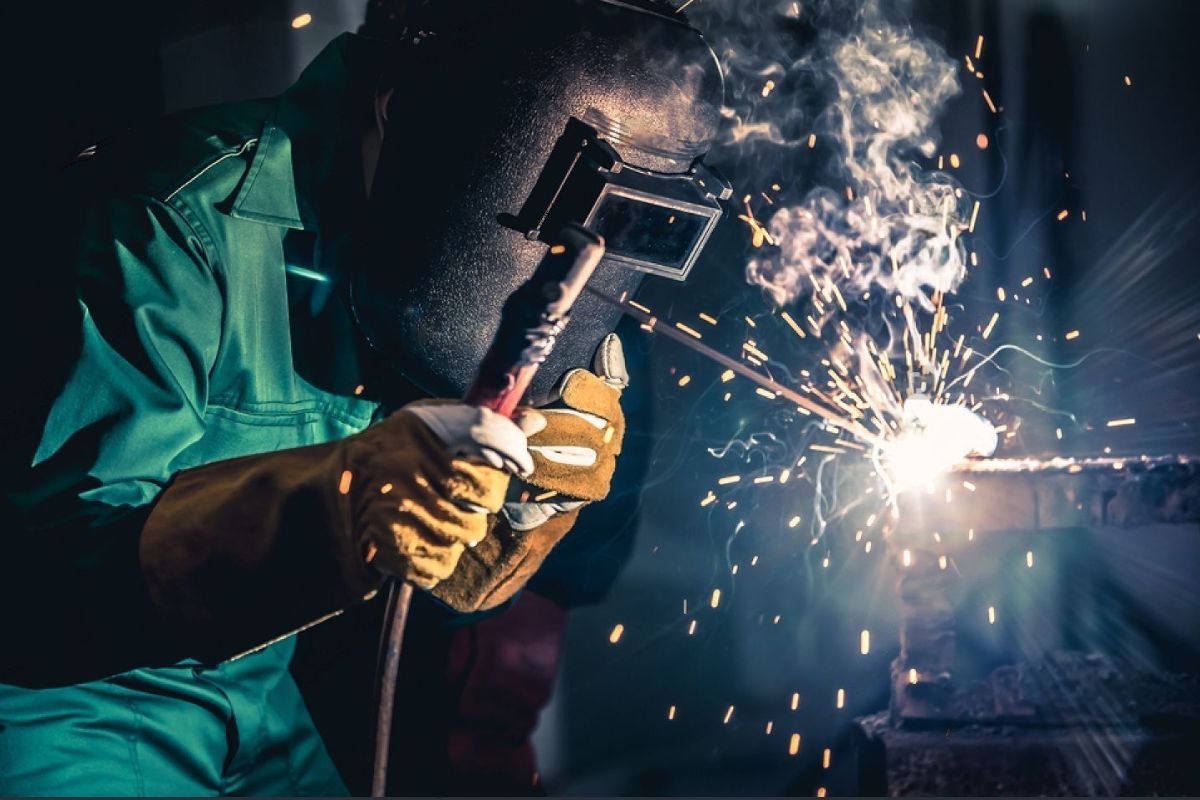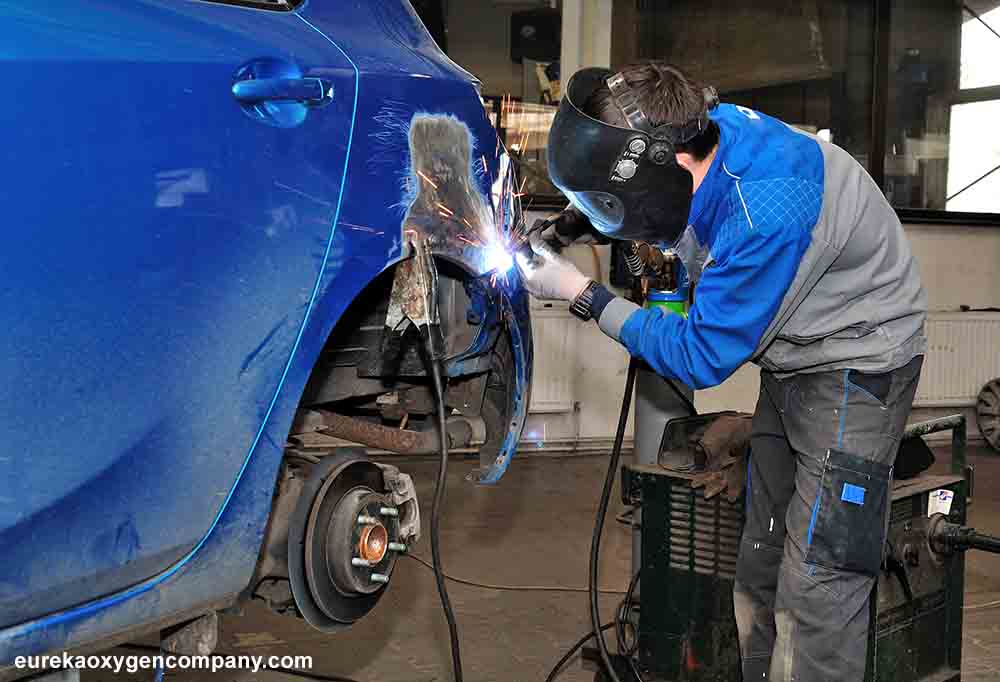Do you know signs of incomplete fusion? Montana Mobile Welding and Repair explains how to detect them
Usual Welding Repair Work Issues and Exactly How to Address Them Efficiently
Welding repair services typically encounter a variety of issues that can jeopardize the stability of the final product. Usual troubles consist of poor infiltration, porosity, and imbalance, amongst others. Each issue presents one-of-a-kind obstacles that require certain methods for resolution. Understanding these concerns is important for welders aiming to enhance their end results and abilities. This conversation will certainly check out these typical welding repair work issues and effective techniques to address them.
Insufficient Penetration
Inadequate infiltration takes place when the weld metal falls short to totally fuse with the base product, causing weak joints and prospective structural failings. This issue usually stems from insufficient warmth input, incorrect electrode angle, or incorrect welding speed. Welders might encounter insufficient infiltration as a result of a mistake of the essential parameters for a specific material thickness or kind. Furthermore, contamination on the base material's surface can hinder effective bonding, worsening the trouble. To deal with poor infiltration, welders ought to ensure ideal setups on their devices and preserve a clean job surface area. Routine assessment of welds is advised to identify any deficiencies early, permitting prompt modifications and the avoidance of jeopardized architectural honesty in bonded settings up.
Porosity
Porosity is a common problem in welded joints that materializes as tiny gas bubbles trapped within the weld steel. This defect can endanger the integrity of the weld, leading to decreased stamina and prospective failure under anxiety. Fabrication. Porosity generally occurs from contamination, wetness, or improper welding strategies, which enable gases to run away into the molten weld pool. To attend to porosity, welders should guarantee correct surface area preparation, preserve a clean functioning atmosphere, and make use of suitable welding criteria. In addition, choosing the ideal filler product and protecting gas can alleviate gas entrapment. Routine examination and screening of welds can aid determine porosity early, assuring prompt corrective actions are taken, therefore maintaining the high quality and reliability of the welded framework
Imbalance
Imbalance in welding can occur from various factors, consisting of improper arrangement and thermal growth. Understanding the origin creates is crucial for reliable resolution. Numerous modification strategies are offered to straighten components and ensure structural integrity.
Causes of Imbalance
Welding misalignment usually originates from a selection of underlying concerns that can endanger structural stability. One main reason is incorrect fit-up of elements prior to welding, which can result in spaces and uneven surface areas. Variations in thermal development throughout the welding process can likewise result in distortion, particularly if the products being joined have different coefficients of growth. Additionally, insufficient securing and fixturing may stop working to hold parts firmly in area, resulting in activity during welding. Improperly kept equipment, consisting of welding devices and tools, may present incongruities in the weld bead, additional adding to misalignment. Finally, operator error, stemming from insufficient training or experience, can also play a substantial function in developing misaligned welds.
Adjustment Methods Readily Available
Attending to imbalance effectively calls for a mix of corrective techniques tailored to the particular concerns at hand. One usual method is the use of jigs or components to hold parts in the correct setting throughout welding, ensuring constant positioning. Furthermore, preheating the products can help in reducing distortion and boost fit-up. For considerable imbalance, mechanical adjustment methods, such as utilizing hydraulic jacks or clamps, can be used to deal with the setting before welding. Post-weld warm treatment might also be necessary to soothe tensions created by misalignment. Finally, careful assessment and modification throughout the arrangement phase can protect against misalignment issues from coming to be substantial problems, promoting a smoother welding process and boosting general architectural stability.
Distortion
Distortion is an usual obstacle in welding that can occur from various elements, including uneven heating & cooling. Recognizing the reasons for distortion is vital for executing effective avoidance methods. Addressing this issue not only improves architectural integrity however also enhances the overall high quality of the weld.
Reasons of Distortion
When subjected to the extreme warm of welding, materials often undergo adjustments that can result in distortion. This phenomenon mainly emerges from thermal growth and contraction throughout the welding procedure. As the weld location warms up, the material expands; upon air conditioning, it contracts, which can create internal anxieties. Furthermore, irregular home heating throughout a workpiece can exacerbate these stresses, causing bending or bending. The sort of product additionally plays a considerable role; metals with varying thermal conductivity and coefficients of development may react in a different way, causing unforeseeable distortions. Poor joint design and insufficient fixturing can add to misalignment during welding, increasing the probability of distortion. Comprehending these reasons is essential for reliable welding repair work and prevention methods.
Avoidance Techniques
Effective avoidance strategies for distortion during welding emphasis on managing heat input and making certain appropriate joint design. Maintaining a regular warm input helps to decrease thermal growth and tightening, which can result in distortion. Using methods such as preheating the workpiece can additionally lower the temperature slope, advertising consistent heating. In addition, picking proper joint designs, such as T-joints or lap joints, can enhance stability and lower stress concentrations. Applying appropriate fixturing to safeguard the work surfaces in area better help in keeping alignment during the welding process. Ultimately, staggered welding series can disperse heat more equally, preventing local distortion. By using these approaches, welders can significantly decrease the probability of distortion click here and boost the general top quality of their welds.
Breaking
Cracking is a typical problem experienced in welding repairs, commonly arising from various variables such as incorrect air conditioning rates, product selection, or inadequate joint preparation. The incident of fractures can significantly endanger the stability of the weld, leading to potential failures during operation. To resolve this problem, welders have to first evaluate the origin causes, making certain that materials are suitable and properly picked for the particular application. In addition, regulating the air conditioning rate throughout the welding process is necessary; rapid cooling can induce stress and anxiety and bring about breaking. Appropriate joint design and preparation also add to minimizing the danger. Executing these techniques can boost weld high quality and sturdiness, eventually minimizing the probability of fracturing in finished weldments.

Insufficient Combination
A considerable concern in welding fixings is incomplete fusion, which occurs when the weld metal does not effectively bond with the base product or previous weld passes - Montana Mobile Welding and Repair Belgrade Welding. This problem can lead to weaknesses in the joint, possibly endangering the integrity of the bonded structure. Elements contributing to insufficient fusion consist of insufficient warm input, improper welding method, and contamination of the surfaces being joined. To address this issue efficiently, welders must guarantee proper pre-weld cleansing and surface prep work, along with readjust their welding criteria to attain adequate infiltration and blend. Routine examination throughout the welding procedure can likewise help recognize incomplete fusion early, enabling prompt rehabilitative steps to enhance the total high quality of the weld
Overheating
While welding repair services can improve structural stability, overheating presents a substantial obstacle that can bring about material destruction. Excessive warmth during welding can modify the mechanical residential properties of metals, leading to decreased toughness, raised brittleness, and warping. This phenomenon is especially important in high-stress applications where structural dependability is paramount. Recognizing overheating can include visual examinations for staining or distortion, along with monitoring temperature during the welding procedure. To alleviate the risks related to getting too hot, welders should employ ideal methods, such as regulating warmth input, readjusting traveling rate, and utilizing suitable filler products. In addition, executing pre- and post-weld warmth treatments can help recover product homes and enhance the overall high quality of the repair, ensuring long-lasting performance and security.
Regularly Asked Concerns
What Are the Usual Indications of a Welding Flaw?

Exactly How Can I Examine My Welds for High quality?
To examine welds for top quality, one can use visual evaluations, ultrasonic screening, and radiographic techniques. Each technique ensures architectural integrity, identifies problems, and verifies adherence to specified criteria, eventually improving the integrity of the welded joints.
What Security Safety Measures Should I Take While Welding?
When welding, one should focus on security by wearing appropriate individual safety equipment, guaranteeing proper air flow, securing combustible products away, preserving a clean work space, and knowing surroundings to avoid injuries and accidents.
Can I Fix a Weld Without Redoing the Entire Joint?
Repairing a weld without remodeling the entire joint is feasible, depending upon the damages (Montana Mobile Welding and Repair Belgrade Fabrication). Methods such as grinding, adding filler material, or utilizing a welding procedure can successfully resolve certain flaws while maintaining the surrounding structure
What Devices Are Essential for Efficient Welding Repair Works?
Essential tools for efficient welding fixings consist of a welding device, wire brush, grinder, safety gear, clamps, and filler materials. Each device plays a vital duty in making certain high quality and safety and security throughout the repair work procedure. Porosity commonly occurs from contamination, wetness, or incorrect welding techniques, which allow gases to get away into the liquified weld pool. Improperly kept devices, consisting of welding devices and tools, may present inconsistencies in the weld bead, additional contributing to imbalance. When subjected to the extreme heat of welding, materials commonly go through adjustments that can lead to distortion. Cracking is an usual concern experienced in welding repair work, commonly resulting from numerous elements such as improper air conditioning rates, material option, or poor joint preparation. A significant issue in welding fixings is incomplete fusion, which occurs when the weld metal does not effectively bond with the base product or previous weld passes.